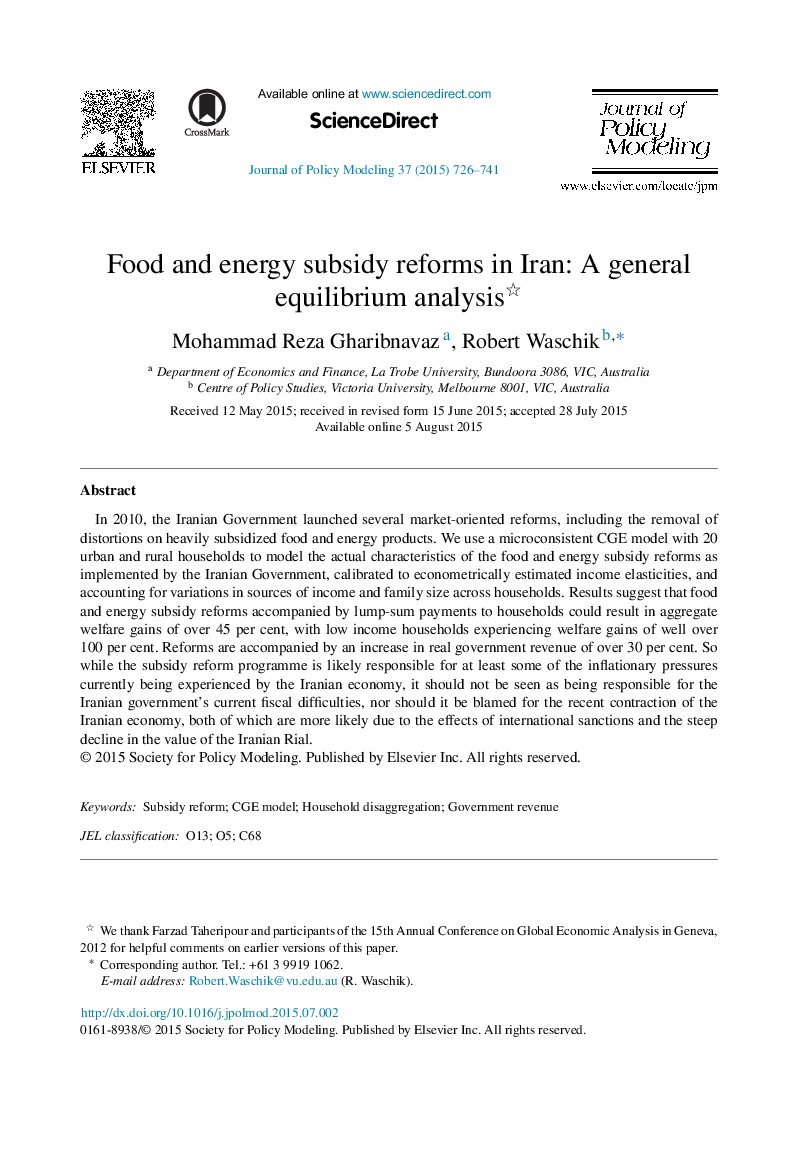| کد مقاله | کد نشریه | سال انتشار | مقاله انگلیسی | نسخه تمام متن |
|---|---|---|---|---|
| 10479329 | 931614 | 2015 | 16 صفحه PDF | دانلود رایگان |
عنوان انگلیسی مقاله ISI
Food and energy subsidy reforms in Iran: A general equilibrium analysis
ترجمه فارسی عنوان
اصلاحات یارانه غذایی و انرژی در ایران: یک تحلیل کلی تعادل
دانلود مقاله + سفارش ترجمه
دانلود مقاله ISI انگلیسی
رایگان برای ایرانیان
کلمات کلیدی
موضوعات مرتبط
علوم انسانی و اجتماعی
اقتصاد، اقتصادسنجی و امور مالی
اقتصاد و اقتصادسنجی
چکیده انگلیسی
In 2010, the Iranian Government launched several market-oriented reforms, including the removal of distortions on heavily subsidized food and energy products. We use a microconsistent CGE model with 20 urban and rural households to model the actual characteristics of the food and energy subsidy reforms as implemented by the Iranian Government, calibrated to econometrically estimated income elasticities, and accounting for variations in sources of income and family size across households. Results suggest that food and energy subsidy reforms accompanied by lump-sum payments to households could result in aggregate welfare gains of over 45 per cent, with low income households experiencing welfare gains of well over 100 per cent. Reforms are accompanied by an increase in real government revenue of over 30 per cent. So while the subsidy reform programme is likely responsible for at least some of the inflationary pressures currently being experienced by the Iranian economy, it should not be seen as being responsible for the Iranian government's current fiscal difficulties, nor should it be blamed for the recent contraction of the Iranian economy, both of which are more likely due to the effects of international sanctions and the steep decline in the value of the Iranian Rial.
ناشر
Database: Elsevier - ScienceDirect (ساینس دایرکت)
Journal: Journal of Policy Modeling - Volume 37, Issue 5, SeptemberâOctober 2015, Pages 726-741
Journal: Journal of Policy Modeling - Volume 37, Issue 5, SeptemberâOctober 2015, Pages 726-741
نویسندگان
Mohammad Reza Gharibnavaz, Robert Waschik,
